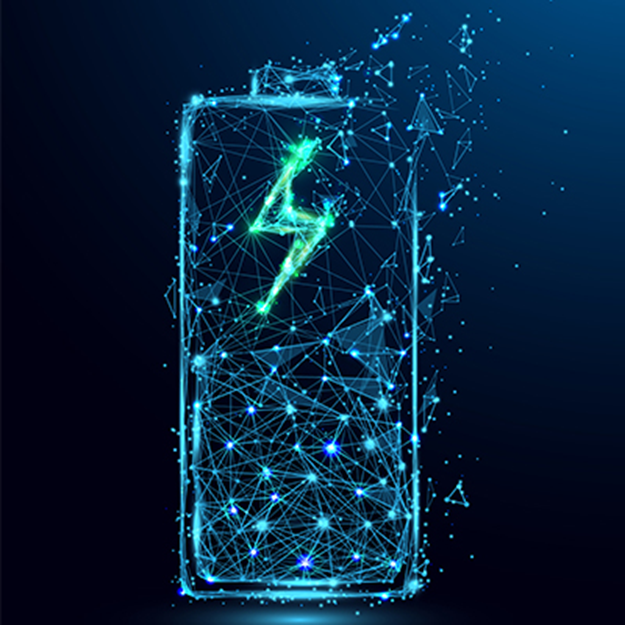
This is the fifth in a six-part series on lithium batteries:
- What’s Inside a Lithium-Ion battery? link
- How is a Lithium-Ion battery different than a Lead-Acid battery?
- Which is a better Lithium-Ion battery, NMC or LFP?
- Aren’t all Battery Management Systems (BMS) the same?
- What is the future of lithium batteries?
- Beyond Lithium Ion - what’s the future of energy storage and renewable energy generation?
Batteries are the area of the electric propulsion system that are experiencing the fastest advancement and where the most research is being done. This blog post takes a look at lithium-ion battery research and advancements.
The Big Question

Before we dive into the research, we want to answer one of the most common questions we get. Given the advancement of lithium-ion battery research, is it worth buying an electric system with today’s lithium-ion batteries or should go diesel today and electric tomorrow? Our answer is unequivocally to go electric today and that getting today’s lithium-ion batteries are a good investment. The reason for this is that higher energy density lithium-ion batteries and alternative energy storage solutions won’t be available for years to come and will be expensive. Today’s lithium-ion batteries enable viable electrification now and these batteries, when used properly and not drained excessively/repetitively should last long enough for energy storage technology to evolve and also begin to come down in price. With an electric propulsion system, one enjoys the benefits of quiet/fume free/zero-emission today. Also, swapping batteries is much easier and quicker than doing a diesel engine repower making electric system upgrades easier and faster than upgrading a diesel engine system. It’s kind of like asking whether buying a bulky cell phone in the 1990s was worth it even though cell phones were sure to advance, but the advantages of even early cell phones were superior to that of land lines.
Importance of Lithium-Ion Research
Today, among all the energy storage technologies, lithium-ion batteries allows the highest level of energy density of approximately 250 watts/kg for NMC batteries. That is much higher than lead acid batteries that have 25 watts/kg. However, it still is not near the energy density needed for widespread marine electrification, there are safety concerns, especially as most regulators and consumers ignore the role a BMS plays in safety and the production of lithium-ion batteries requires rare materials and has its own negative environmental impacts on our planet. Therefore, lithium-ion battery research focuses on increasing energy density, increasing safety and substituting readily available materials for rare ones with research advancements for the cathode, anode and electrolyte solution. This blog post looks at these three areas of research and at the end predicts where Lithium-Ion Batteries will be in 5-10 years.
The energy density of diesel is 12,700 watts/kg and gasoline is 12,200 watts/kg. That is 48 times the energy density of today’s lithium-ion battery. That means 1 kilogram of diesel can produce the same energy has 48 kilograms of lithium-ion batteries. This is why the range of an electric boat is limited because one cannot store equivalent energy in lithium-ion batteries as one can in a diesel/gas fuel tank without putting too much weight on a vessel.
Cathode

The biggest problem with lithium-ion batteries is the cathode. Due to the limitation of the cathode materials, less than half of lithium ions can be reversible and participate in the charge-discharge process. If a higher percent of lithium ions are used, the stability and cycle performance of the battery will decrease rapidly and shorten battery life.
Alternative cathode material research will most likely increase energy storage of lithium-ion batteries, decrease lithium-ion battery costs and decrease the use of environmentally damaging rare earth metals.
The biggest reason for the cost and environmental downside of lithium-ion batteries is the use of cobalt in NMC chemistries.
One possible substitute is Lithium Nickel Manganese Oxide (LNMO) in which Nickel replaces the Cobalt. LNMO cathodes cost 60% less than NMC cathodes and helps to bring down the price of lithium-ion batteries. Also, the three-dimensional spinel structure of LNMO makes it possible to achieve high charge/discharge rates. This means that the battery can be charged/discharged faster and can operate at elevated voltage (around 4.7 V instead of 4.2V for NMC), which yields to a high-energy densities of 650 watts/kg for the battery. Unfortunately, LNMO cathodes cause severe electrolyte degradation making this cheaper, more environmental, higher energy density solution not viable until solutions to extend battery longevity are proven effective. The principal research taking place that will allow the use of LNMO cathodes is to coat the internal surface area of the cathode with titanium dioxide, aluminum oxide and other materials that allow energy transfer but prevent direct contact with the liquid electrolyte. We believe that within five years, LNMO batteries could replace LFP and NMC batteries and more than double the energy storage potential of lithium-ion batteries.
Anode
However, the potential of LNMO to reach 650 watts/kg means that battery researches have begun to look at the anode because the most common material used for the anode, graphite, works fine for lower energy density NMC/LFP batteries, but will limit battery capacity as cathode capacity grows. Graphite is the most common anode material and it has specific capacity of about 350 mAh/g. Silicon, a cheaper and more readily available material, has a specific capacity of about 4200 mAh/g. However, their greater ability to absorb and release lithium-ions causes the silicon to break down rapidly. Nanostructured porous silicon, thin silicon vs thick silicon architecture, carbon and other coatings and using a combination of graphite and silicon are predicted to increase the cycling ability of the anode to be in line with cathode cycling advances. Currently, researches achieved up to 50 charging/discharging cycles with silicon anodes with a goal of 500 cycles in the near future. 10% silicon/90% graphite anodes are commercially available now.
Electrolyte
Increasing the cathode and anode capacities will also require increasing the electrolyte (ionic) transport capability. The transport properties of new solvents and higher concentration salts should allow the electrolyte solution to keep up with cathode and anode advances.
Crystal Ball Prediction
At Green Yachts, our guess is as good (or bad) as anyone’s about the future of energy storage. With that caveat, we predict that lithium battery energy density will more than double by 2030 and triple by 2035. Increasing range 200-300% with the same battery weight is great and vessels being able to go 60 miles instead of 20 miles moves the needle on marine electrification. However, we believe that 700-900 watts/kg is the upper limit of lithium-ion energy density. And, in our next blog post, we look at alternatives to the lithium ion-battery that we believe will ultimately make the lithium-ion battery obsolete.


Leave Comment